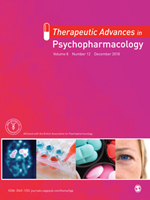 “Drug-resistant seizures are life-threatening and contribute to sustained hospitalization.
“Drug-resistant seizures are life-threatening and contribute to sustained hospitalization.
We present the case of a critically ill 28-year-old male with Lennox-Gastaut syndrome who had approximately 30 seizures/day in the intensive care unit.
CASE DESCRIPTION:
Patient required mechanical ventilation and pharmacologically induced thiopentone coma.
He was commenced on cannabidiol and subsequently extubated.
He remained seizure-free thereafter on a combination of cannabidiol and anti-epileptic medication that predated his critical illness.
WHAT IS NEW AND CONCLUSION:
Our case report provides a unique perspective on the role of cannabidiol in achieving remission from drug-resistant seizures in critically ill patients.”

 “Interstitial cystitis (IC) is a chronic bladder disorder with unclear etiology.
“Interstitial cystitis (IC) is a chronic bladder disorder with unclear etiology. “Neuroinflammation is associated with many neurodegenerative diseases, including amyotrophic lateral sclerosis (ALS). In this study, we investigate the anti-inflammatory, anti-oxidant, and anti-apoptotic properties of two non-psychoactive phytocannabinoids, cannabigerol (CBG) and
“Neuroinflammation is associated with many neurodegenerative diseases, including amyotrophic lateral sclerosis (ALS). In this study, we investigate the anti-inflammatory, anti-oxidant, and anti-apoptotic properties of two non-psychoactive phytocannabinoids, cannabigerol (CBG) and  “Accumulating evidence implicates the endocannabinoid system in the pathophysiology of psychosis.
“Accumulating evidence implicates the endocannabinoid system in the pathophysiology of psychosis.

 “Parkinson’s disease (PD) and L-DOPA-induced dyskinesia (LID) are motor disorders with significant impact on the patient’s quality of life. Unfortunately, pharmacological treatments that improve these disorders without causing severe side effects are not yet available. Delay in initiating L-DOPA is no longer recommended as LID development is a function of disease duration rather than cumulative L-DOPA exposure.
“Parkinson’s disease (PD) and L-DOPA-induced dyskinesia (LID) are motor disorders with significant impact on the patient’s quality of life. Unfortunately, pharmacological treatments that improve these disorders without causing severe side effects are not yet available. Delay in initiating L-DOPA is no longer recommended as LID development is a function of disease duration rather than cumulative L-DOPA exposure. “Social anxiety disorder (SAD), or social phobia, is one of the most common types of anxiety disorder, with a lifetime prevalence that can reach 15%.
“Social anxiety disorder (SAD), or social phobia, is one of the most common types of anxiety disorder, with a lifetime prevalence that can reach 15%. “Research in the cannabinoid field, namely on phytocannabinoids, the endogenous cannabinoids anandamide and 2-arachidonoyl glycerol and their metabolizing and synthetic enzymes, the cannabinoid receptors, and anandamide-like cannabinoid compounds, has expanded tremendously over the last few years. Numerous endocannabinoid-like compounds have been discovered. The Cannabis plant constituent
“Research in the cannabinoid field, namely on phytocannabinoids, the endogenous cannabinoids anandamide and 2-arachidonoyl glycerol and their metabolizing and synthetic enzymes, the cannabinoid receptors, and anandamide-like cannabinoid compounds, has expanded tremendously over the last few years. Numerous endocannabinoid-like compounds have been discovered. The Cannabis plant constituent  “Evidence suggests that the phytocannabinoids Δ-9-tetrahydrocannabinol (THC) and cannabidiol (CBD) differentially regulate salience attribution and psychiatric risk. The ventral hippocampus (vHipp) relays emotional salience via control of dopamine (DA) neuronal activity states, which are dysregulated in psychosis and schizophrenia. Using in-vivo electrophysiology in male Sprague Dawley rats, we demonstrate that intra-vHipp THC strongly increases ventral tegmental area (VTA) DA neuronal frequency and bursting rates, decreases GABA frequency, and amplifies VTA beta, gamma and epsilon oscillatory magnitudes via modulation of local extracellular signal-regulated kinase phosphorylation (pERK1-2). Remarkably, whereas intra-vHipp THC also potentiates salience attribution in morphine place-preference and fear conditioning assays, CBD co-administration reverses these changes by down-regulating pERK1-2 signaling, as pharmacological re-activation of pERK1-2 blocked the inhibitory properties of CBD. These results identify vHipp pERK1-2 signaling as a critical neural nexus point mediating THC-induced affective disturbances and suggest a potential mechanism by which CBD may counteract the psychotomimetic and psychotropic side-effects of THC.
“Evidence suggests that the phytocannabinoids Δ-9-tetrahydrocannabinol (THC) and cannabidiol (CBD) differentially regulate salience attribution and psychiatric risk. The ventral hippocampus (vHipp) relays emotional salience via control of dopamine (DA) neuronal activity states, which are dysregulated in psychosis and schizophrenia. Using in-vivo electrophysiology in male Sprague Dawley rats, we demonstrate that intra-vHipp THC strongly increases ventral tegmental area (VTA) DA neuronal frequency and bursting rates, decreases GABA frequency, and amplifies VTA beta, gamma and epsilon oscillatory magnitudes via modulation of local extracellular signal-regulated kinase phosphorylation (pERK1-2). Remarkably, whereas intra-vHipp THC also potentiates salience attribution in morphine place-preference and fear conditioning assays, CBD co-administration reverses these changes by down-regulating pERK1-2 signaling, as pharmacological re-activation of pERK1-2 blocked the inhibitory properties of CBD. These results identify vHipp pERK1-2 signaling as a critical neural nexus point mediating THC-induced affective disturbances and suggest a potential mechanism by which CBD may counteract the psychotomimetic and psychotropic side-effects of THC. “Compounds present in Cannabis sativa such as phytocannabinoids and terpenoids may act in concert to elicit therapeutic effects.
“Compounds present in Cannabis sativa such as phytocannabinoids and terpenoids may act in concert to elicit therapeutic effects.